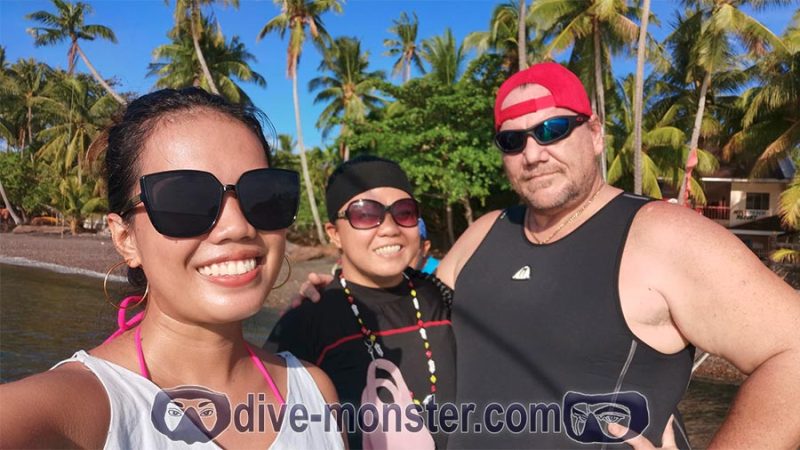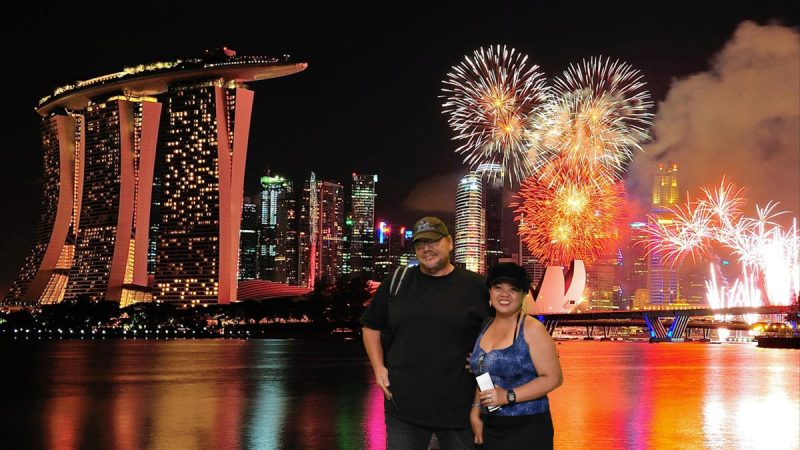This part goes mainly about the terrible experience of Don Shirley, who got in deep trouble on his long way up after his malfunctioning apparatus.
IT WAS 7 P.M. SATURDAY EVENING in Hong Kong, and Ann Shaw was in her living room. Her 21-year-old daughter, Lisa, was with her, on break from the Royal Melbourne Institute of Technology. The doorbell rang, and Ann opened the door to see Vickers, accompanied by two friends from church. Ann thought the dive wasn’t taking place until the next day, but as soon as she saw the somber group, she knew. Vickers explained that Dave was five hours late. He suggested there was still a chance he could reappear. “Oh, no, he won’t,” Ann replied. “Not if he’s been down there so long.”
Ann, who has a deep faith in God, tried to believe that there was some higher purpose in what was happening. More than anything, though, she was struck by how completely her life had changed in the brief time it took Vickers to relay the news. The last time she’d had that feeling was 30 years earlier, at 19, as she walked down the aisle to be married, with Dave Shaw, himself just 20, waiting for her at the altar.
Back at the hole, van Schaik didn’t have time to think much about Shaw. With five other divers in the water and only two reserve divers on the surface, she had to focus on Don Shirley. She sent Gerhard Du Preez, 31, into the hole to find him, with instructions to check everyone on his way down. Du Preez found Shirley just below the ceiling of the main chamber, checked that he was OK, then turned immediately for the surface to report back.
Alone again, Shirley continued his retreat. As he approached the chamber ceiling at about 164 feet, he started feeling faint. Instinct told him to get off his rebreather and onto his open-circuit bailout before he lost consciousness. He stuffed the regulator into his mouth, and as soon as he did, the cave started to spin around him. Shirley didn’t know it yet, but a small bubble of helium had formed in his left inner ear, causing extreme vertigo. He was in a washing machine, and off the shot line. In the dark, all he could see with his light as he spun was black, followed by the flash of the cave roof, then black. He saw a flash of white go by, and then again. It was the shot line, and without thinking he thrust out his hand to grab it. That grab kept him alive. If he had missed, he would have drifted off, lost in the blackness. Up or down, it wouldn’t really have mattered. Depth or the bends would have finished him, and van Schaik and her divers would have returned to an empty line.
The washing machine finally slowed just long enough for Shirley to read the backlit screen of his primary VR3. It showed he had come up to 114 feet. It also warned him that he needed to be down at 151 feet. Hand over hand, Shirley descended. As he reached his new depth, nausea hit him and he started to vomit. Shirley would feel the heave coming, pull the regulator from his mouth, throw up, and then replace the regulator. Fighting the vertigo and nausea, he managed to grab some spare gas cylinders from the cluster clipped onto the shot line nearby. The thought that he might die never occurred to him. I will survive, I will survive, he kept telling himself.
After about 20 minutes, Truwin Laas, 31, van Schaik’s second reserve diver, appeared. Shirley scratched on his slate, I’M HAVING A BAD TIME. I’VE GOT VERTIGO AND I’M VOMITING. Laas made sure Shirley was breathing the right gas mix for the depth, decided he was stable, and left quickly to update van Schaik. Shirley, alone again, started cycling repeatedly through a subroutine of survival, asking himself, Where should I be now? How long should I be here? And where do I have to go? Each breath was a conscious act that got harder as he tired. Suck, hold, exhale. Suck, hold, exhale. I will survive. I will survive.
Now the marathon began. Van Schaik started cycling divers down to stay with Shirley. Du Preez, Laas, Sander, and Vingerling dived repeatedly that day, racking up three or four dives apiece despite the risk of getting the bends themselves. (Herbst, who was out of action for hours with a suspected minor bend, went down once more; Andrews and Stojakovic had been too deep to dive again.) The divers clipped Shirley to the shot line in case he convulsed or passed out, unclipping him only to move him from one decompression stop to another. Every movement brought a new round of vomiting. “It was heartbreaking to hear,” Vingerling says, mimicking the spastic violence of Shirley’s dry heaves.
Before the dive, Shirley had told the team that if anything went wrong, his wife, Andre, was to be given the bad news straight and fast. Andre, who had stayed behind at Komati Springs to run the dive center, had been getting regular updates. After one call, a slate was taken to Shirley. MESSAGE FROM ANDRE, I LOVE YOU, it read, and then, YOU’D BETTER HANG IN THERE OR ELSE.
After more than ten hours in the water, Shirley finally reached a depth of 20 feet. He was exhausted and approaching hypothermia, but he stayed there decompressing for almost two hours. The next circle of hell was at just ten feet and had to be endured, according to the tables, for a full two hours and 20 minutes. As soon as Shirley settled in, a sharp pain flared in his left leg, a sign that more bends could be on the way. It was time to take his chances on the surface. LOWER LEFT LEG HURT. COULD BE LACK OF USE? he wrote on a slate. Soon after, Sander appeared. I’M HERE TO TAKE YOU HOME, he wrote.
Shirley was carried out. He had been in Bushman’s Hole almost 12 and a half hours. “Don’t cut the drysuit,” he managed to growl when he saw Du Preez coming at him with a pair of shears. Shirley was winched up the cliff face, and within 22 minutes he was in the recompression chamber.








